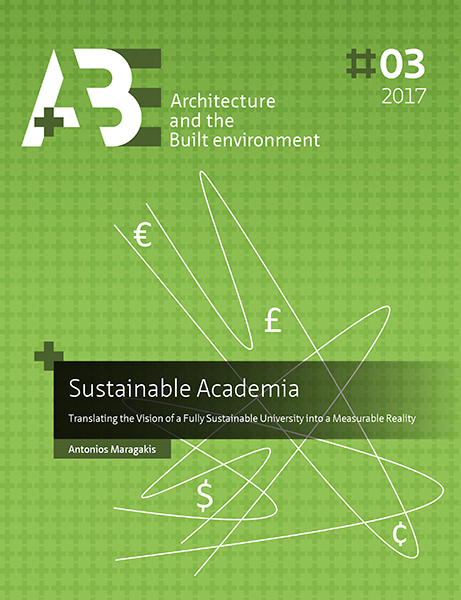Summary and Conclusions
DOI:
https://doi.org/10.7480/abe.2017.3.3663Abstract
This doctoral dissertation presented the creation of a holistic framework that would aid students in reviewing sustainability tools, assessments and marketing. The previous chapters present the methodological, peer-reviewed approach towards this research that consisted of qualitative and quantitative methods which combined relevant literature and stakeholder needs.
In Chapter 2, a survey was conducted to identify features, trends, and needs in relation to sustainability in higher education. It indicated that there was a stakeholder need for a universal sustainability assessment system in higher education while also identifying a gap in current assessment systems; namely not including the economic well-being of graduates.
In Chapter 3, a qualitative review was conducted to develop a theoretical framework for comparing sustainability assessments. It was empirically tested and resulted in a methodological framework for comparing assessment systems.
In Chapter 4, the framework was utilized for a gap analysis on the prominent STARS assessment systems. During the research, the framework itself was identified as having a gap because it did not address the economic metrics that were needed by stakeholders.
In Chapter 5, a qualitative review was conducted to determine the best economic metrics to be applied in sustainability assessments. The economic return of a degree is a very wellstudied topic but it is novel, and controversial, to include post-graduate economic metrics in sustainability assessments. Three metrics were proposed to be used in sustainability assessments: under-employment, starting salaries and over-education.
In Chapter 6, a quantitative study was conducted to determine the best economic metrics to be applied in sustainability assessments. Stakeholders identified employment being their most important driver, but unsustainable perceptions were also identified in terms of the cost of education and the repayment of educational debt.
Utilizing the research, a website was created to test both the framework and economic metrics to validate their usefulness and relevancy to stakeholders.
In Chapter 7, the relevance of the economic calculator was validated. Stakeholders strongly agreed that the metrics should be included in sustainability assessments. Furthermore, the data collected validated that a majority of stakeholders would accumulate an unsustainable amount of debt.
In Chapter 8, the validation of the framework lead to inconclusive results. The low amount of data collected led to some anecdotal evidence that there may be no need for a universal assessment system for sustainability. The present chapter summarizes the main additions to science presented in this dissertation while also answering the research questions posed in the introduction. It also presents a discussion to the greater meaning of this dissertation and provides recommendations for future research.
This chapter will consecutively discuss the following:
–– Additions to science
–– Answering the research questions
–– Discussions on key results, limitations, scope and the controversy of this topic
–– Recommendations
–– Outlook

